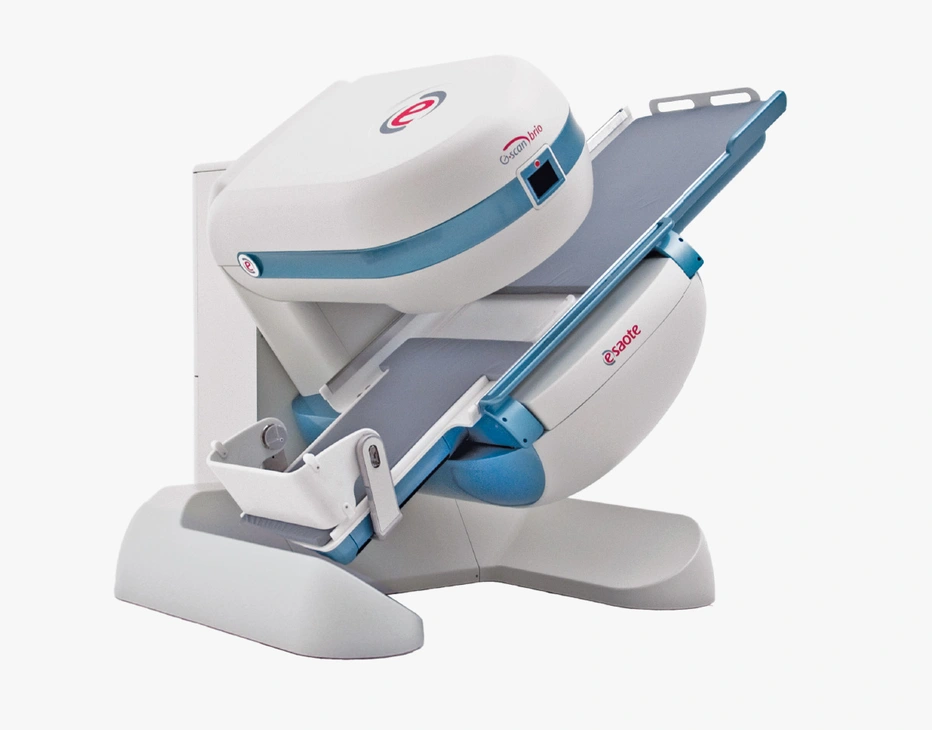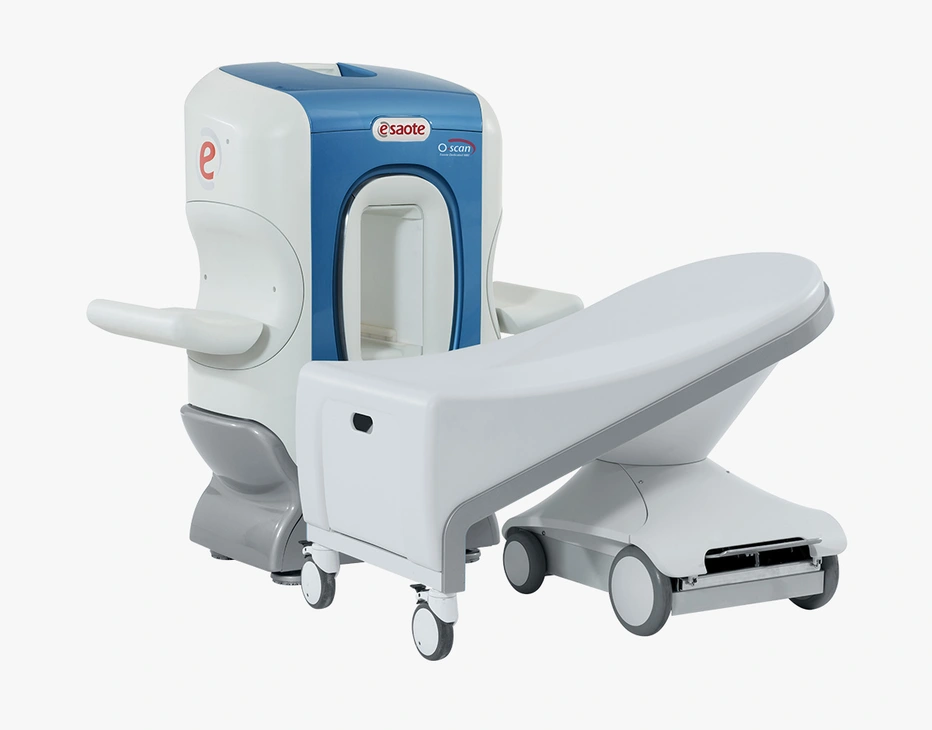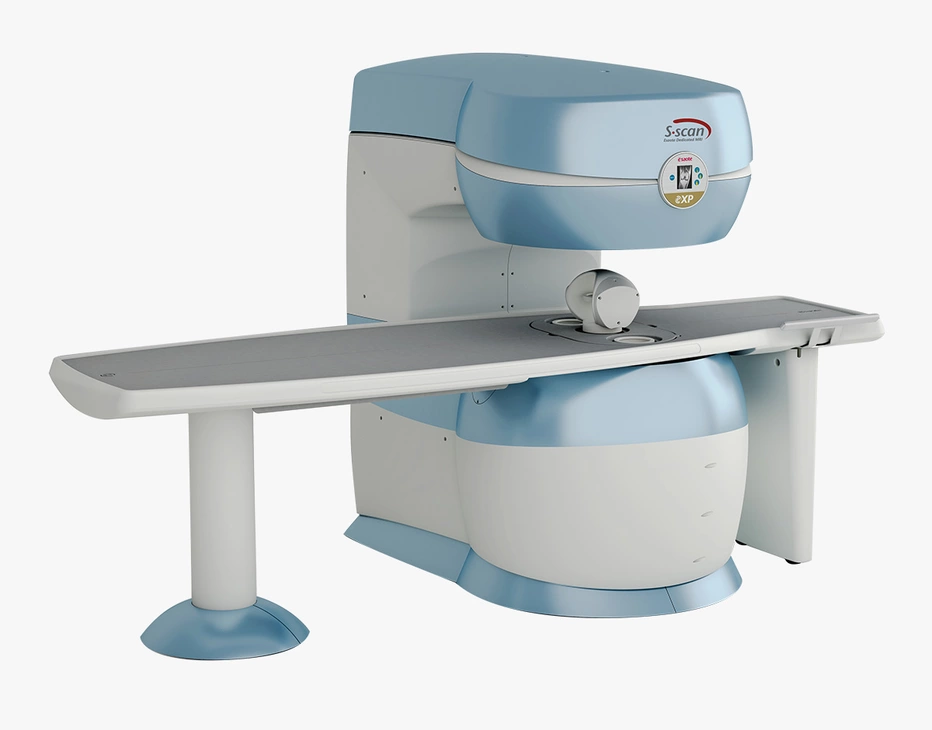Sports Medicine MRI
Sports Medicine MRI is currently the most frequently applied technique to assist your clinical and functional assessment of the athlete (pro-am) for a better estimate of recovery times and final evaluation to return to activities.
Sports participation has been increasing, with an increased number of individuals engaged in physical activities each year. In sports medicine, a significant concern is the prevalence of injuries that impact athletes' performance and overall well-being1. Statistical evidence reveals a considerable incidence of sports-related injuries, with musculoskeletal issues being a prominent focus.
These injuries range from strains and sprains to more complex problems such as ligament tears and stress fractures. The frequency of these injuries underscores the importance of an imaging technique to confirm and assess the extent of sports-related musculoskeletal injuries and may help to guide patient management, which directly affects the prognosis.
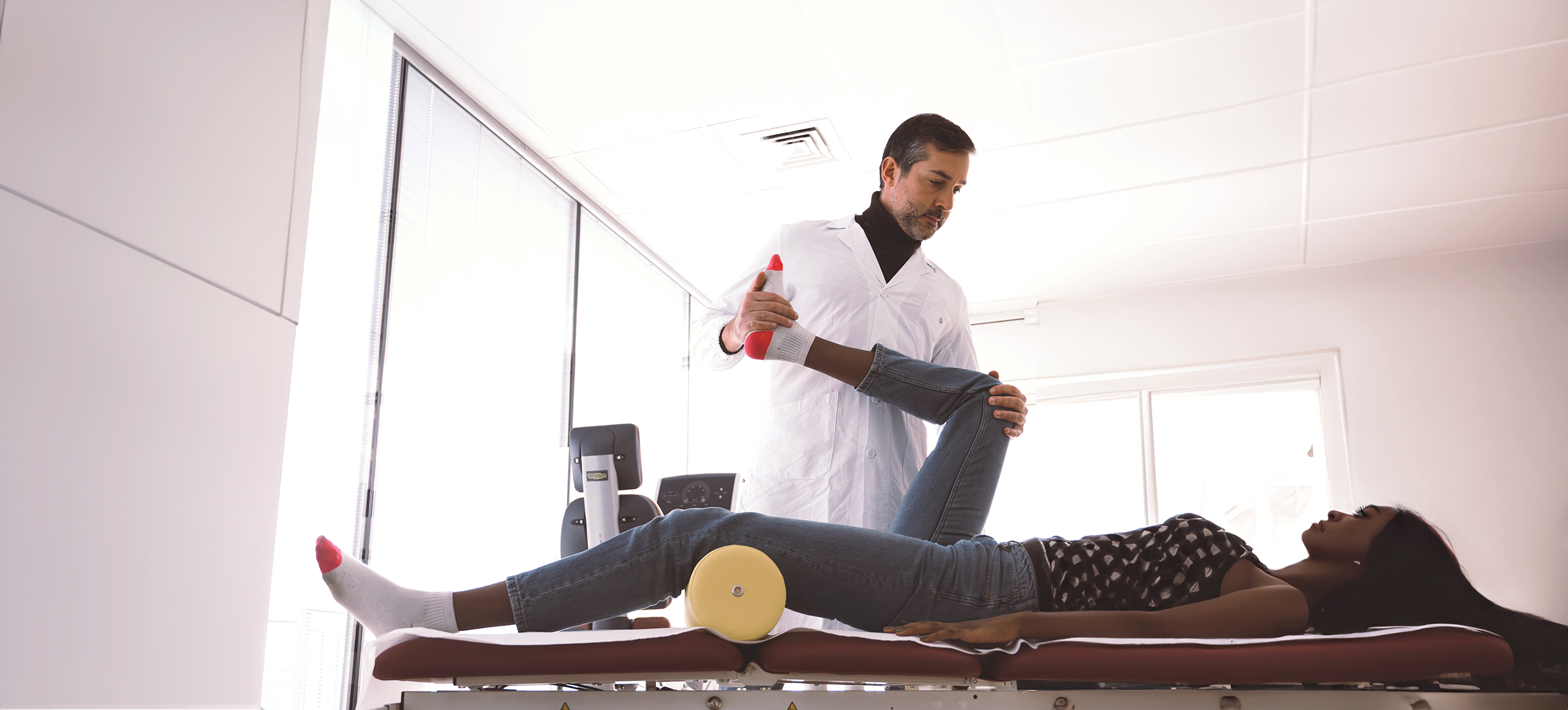
- Innovative Asset for Sports Medicine
Real-time visualization of joint movement thanks to the True-Motion.
- Patient-Friendly Design
Open configuration that minimizes claustrophobia, particularly beneficial for athletes prone to anxiety.
- Strategic MRI for Prompt Care
The small space required allows the opportunity to have MRI systems inside sports arenas.
- Safety and Accessibility Focus
Low-field MRI enhances safety but also widens accessibility, making the MRI setting more comfortable and open to all people engaged in sports.
Sports Medicine MRI is essential for precise diagnosis and prognosis of athletic injuries, facilitating effective treatment and recovery time and has been recognized as the gold standard for this field2,3.
The demand for accurate and rapid diagnosis of the injuries of professional athletes and the increasing number of people participating in sports has prompted the adoption of different medical imaging modalities. Indeed, Sports Medicine MRI stands out for its effectiveness, especially in detailing soft-tissue injuries, and plays a crucial role in assessing muscle damage and intra-articular lesions such as meniscal and cartilage injuries. Its widespread use guides orthopedic surgeries, particularly for muscle, tendon, joint injuries, and stress fractures, enhancing overall outcomes.
Sports medicine MRI dedicated solutions represent an added value for sports medicine centers and practices thanks to enhanced diagnostic capabilities for improved patient treatment and increased patient satisfaction by offering visit and diagnostic imaging as a “one stop shop” experience with clinical visit and diagnostic imaging all in one place.
Next to the ease of use and installation respect to traditional MRI, Esaote Sports Medicine MRI systems - designed with sports diagnostics in mind - offers advanced imaging methods that facilitate diagnosis like True-Motion imaging for diagnosis of the joint in motion and under stress (e.g. evaluation of impignements).
INTERVIEWS
Testimonials

VIDEO
Interview to the Torino Football Club Medical Team
Dr. Daniele Mozzone, Dr. Corrado Bertolo, Alessandro Pernice

VIDEO
Interview to Team Doctor of Torino F.C
Dr. Daniele Mozzone

VIDEO
The great value of True Motion Imaging in sports medicine and the combination of diagnostic imaging modalities, MRI and US
Prof. Fabio Pigozzi, chairman of FIMS
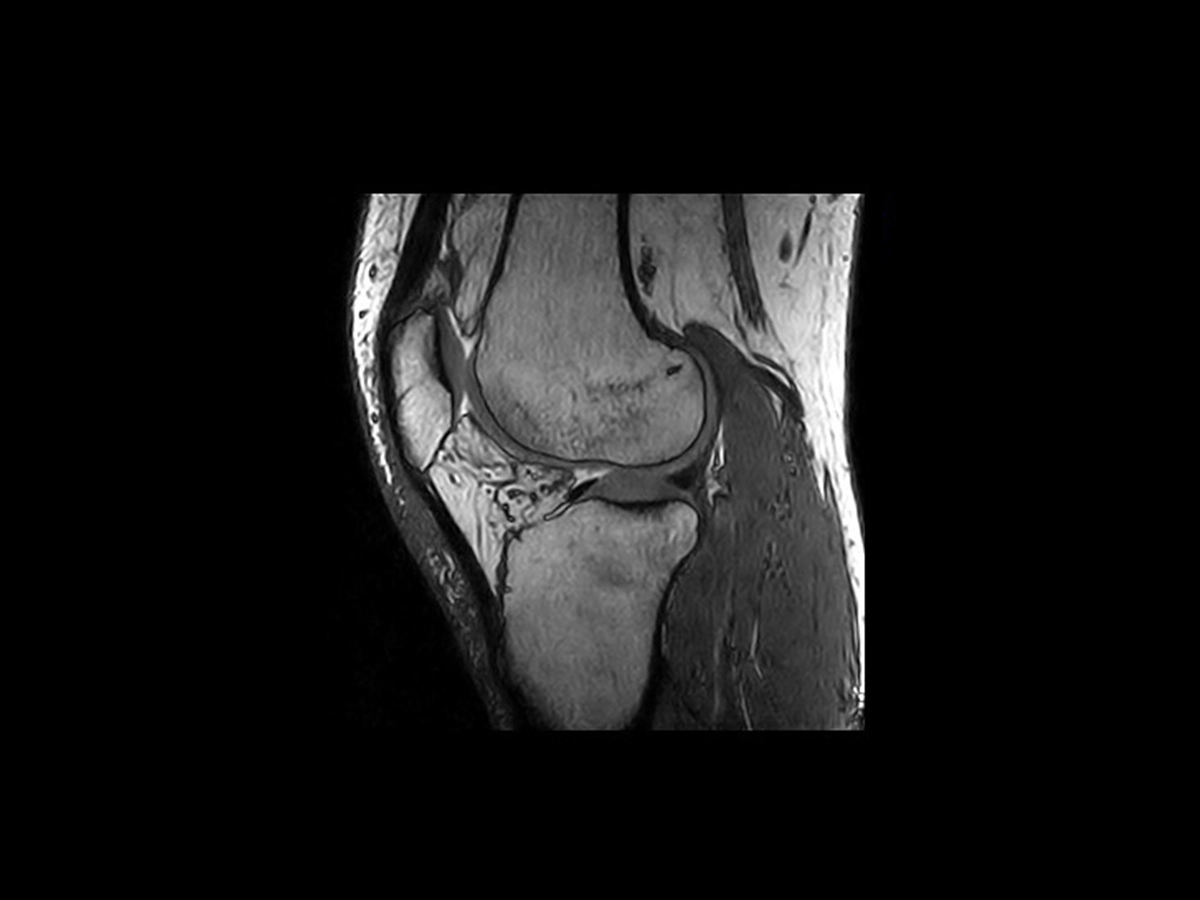
MRI experience for athletes
Reducing recovery time is essential both for sports professionals and for amateur athletes who participate in sports activities. Getting top performers back on the field sooner is important for the athlete, the team, the sponsors and, last but not least, for the joy of the supporters. The real-time monitoring capability of MRI allows for ongoing assessment, ensuring timely adjustments to the treatment strategy.
Thanks to True-Motion, which promotes optimal patient care due to the open configuration, MRI guides orthopedic surgeries by providing a detailed roadmap for surgeons allowing detailed analysis of motion-related pathologies. The low field ensures optimal imaging even in the presence of metal implants, as well as a maximized safe patient experience.
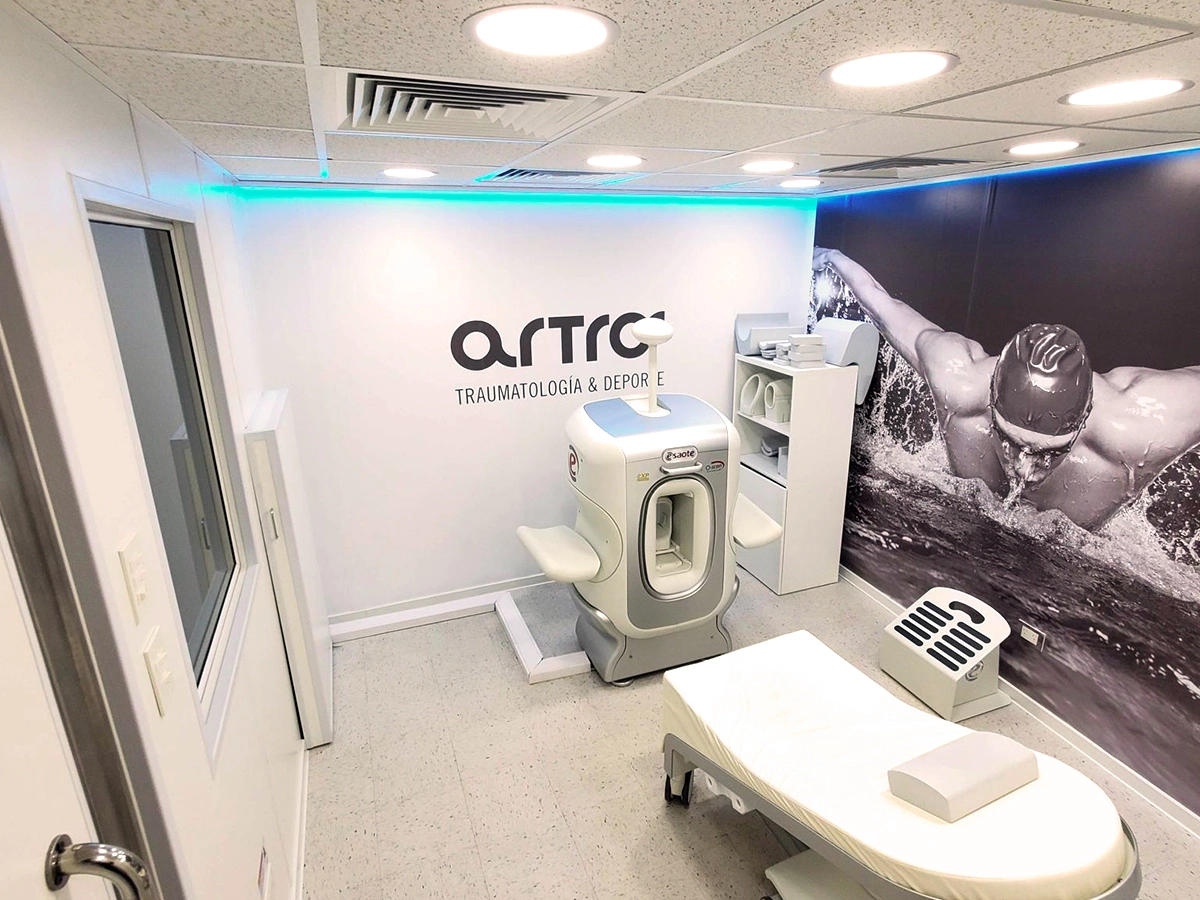
MRI experience for Sports Clinicians
The open design of the systems reduces the likelihood of claustrophobia, enhancing patient comfort, especially among athletes who may be prone to anxiety. The possibility of installing Esaote systems strategically near sports arenas guarantees real-time monitoring of injuries, allowing for prompt decision-making about the athlete's care. These user-friendly systems, complemented by optimized workflows, are tailored with specific sequences and functionalities to ensure peak performance and efficiency in medical imaging.

True-Motion
True-Motion offers significant benefits in imaging pathologies linked to position or movement. It could be seamlessly integrated into regular MRI sequences with minimal additional time compared to standard exams. This tool adds value to exams by enabling real-time visualization of joint movement and it could be particularly advantageous for post-operative evaluations.
The ability to observe joint motion becomes differentiating for certain pathologies because it allows you to see aspects that would otherwise be invisible. In sports medicine, True-Motion is therefore a specialized tool that meets the specific diagnostic needs of athletes, ensuring uncompromised accuracy in the diagnosis. This innovation represents a valuable resource, as it improves the scope and precision of medical imaging, especially in scenarios where movement plays a fundamental role in the evaluation of pathology.
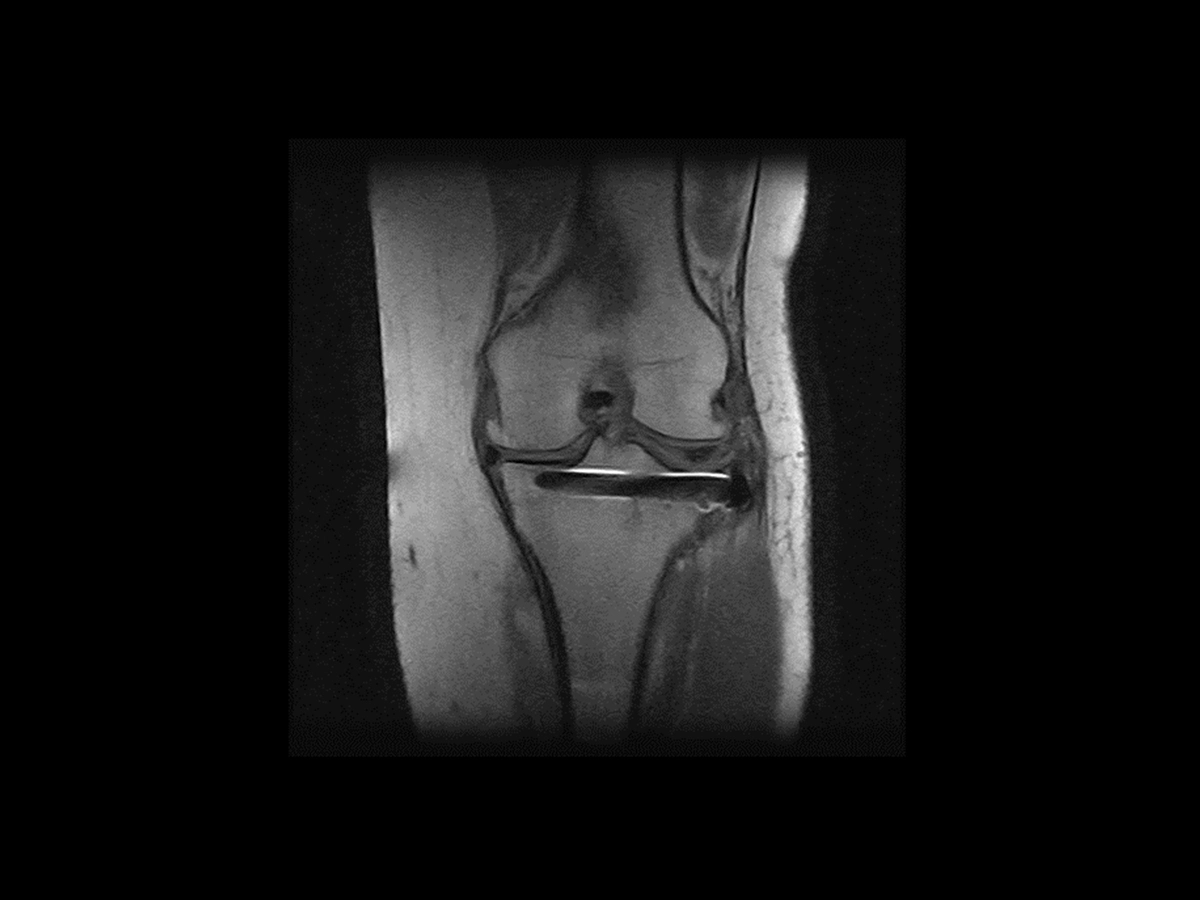
Metal Artifact Reduction
The value for a sports medicine clinician is highlighted by the capability to screen individuals with metal implants using MRI. As the patient population with metal implants continues to rise, with an estimated 2.4% of the U.S. population having hip or knee implants (Mayo Clinic, 2014), MAR becomes crucial. MAR uses an advanced gradients management system to effectively suppress or reduce in-plane metal distortions, ensuring optimal image quality. This innovation is particularly advantageous for post-operative patients, enhancing the imaging process and contributing to improved diagnostic precision in sports medicine.
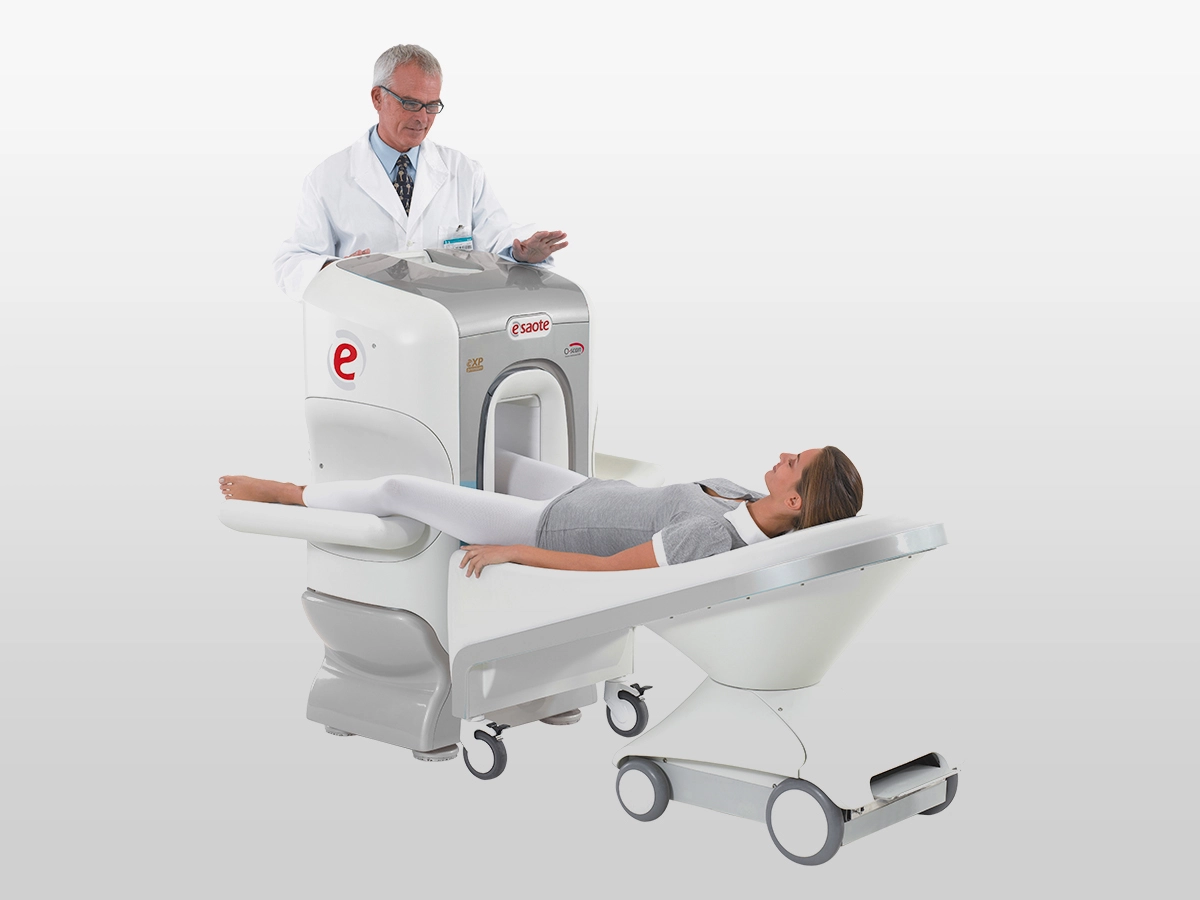
Safety
Ensuring safety during an MRI scan is a priority for professionals and low-field MRI systems contribute significantly to this aspect. With a lower magnetic field, the risk of adverse effects is minimized, providing a safer imaging experience for patients.
Low-field MRI not only improves safety but also expands accessibility to individuals who may have concerns or conditions that limit examination in traditional MRI environments. Esaote MRI systems prioritize safety, widen accessibility, and create a more comfortable setting, fostering a positive experience for all.
Sources
- Asperti AM, Jovanovic I, Carui NAB, Pedrinelli A, Hernandez AJ, Fernandes TL. Increased risk of sports injuries among medical students: cross-sectional study. Acta Ortop Bras. 2022 May 23;30(3):e248732.
- Lischuk AW, Dorantes TM, Wong W, Haims AH. Imaging of sports-related hip and groin injuries. Sports Health. 2010 May;2(3):252-61. doi: 10.1177/1941738110366699
- Jyoti R, Jain T, Damiani M. The expanding role of imaging in the diagnosis and management of sports injuries. Aust J Gen Pract, 2020, 49(1/2): 12-15.
Related systems for Sports Medicine
G-scan Brio
The revolutionary MRI approach that increases diagnostic accuracy and confidence for musculoskeletal applications.
O-scan
The extremity MRI of choice for sites that require high throughput, improved workflow and advanced applications.
S-scan
The optimal choice for any practice with a substantial musculoskeletal work-load.
Technology and features are system/configuration dependent. Specifications subject to change without notice. Information might refer to products or modalities not yet approved in all countries. Product images are for illustrative purposes only.
For further details, please contact your Esaote sales representative.
